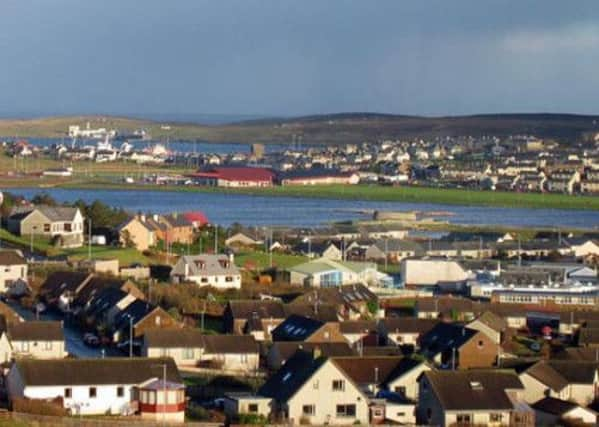Mini-turbine ‘windcrofters’ emerge across Scotland


The renewables industry scheme Energise Scotland targets smallholders and communities who cannot afford to buy expensive green technology.
Under the deal, each property hosts a single small-scale turbine, with investors covering all the installation, planning and maintenance costs.
Advertisement
Hide AdAdvertisement
Hide AdLandowners receive free electricity while developers reap returns in the form of payouts for excess energy, which is sent to the national grid.
Anti-wind farm protest group, Scotland Against Spin, said the initiative was more likely to benefit turbine firms and investors than smallholders.
But Scottish turbine manufacturer Kingspan Wind, which launched the scheme last month, said windcrofting could help thousands of consumers and was likely to take over from larger, more controversial wind farms.
Gavin Kerr, Kingspan Wind’s technical sales manager, said: “Windcrofting is for people who cannot afford a wind farm. It allows the landowner to lease the land to the developer in return for free electricity.
“We’re targeting landowners and also communities in fuel poverty mostly in the Western Isles, Orkney, Shetland and the Highlands where fuel poverty is most obvious.
“We have not installed many yet but we already have just over 100 landowners, mostly smallholders, [signed up to the initiative] and hope to double that by the end of this month.
“You only need one small turbine [under 25 metres] so it is ideal for smallholders who do not have so much space.
“Investors pay for everything, including the cost of the turbine, which is on average about £28,000. All the smallholder has to do is let someone on to their land for half a day each year for maintenance work on the turbine.”
Advertisement
Hide AdAdvertisement
Hide AdLarge scale turbines on wind farms have problems with planning permission whereas smaller ones are less obtrusive and planning permission is easier to obtain, Kerr said.
Grace MacDonald had a turbine installed under the scheme in March at the two-acre croft she runs with her husband in Skye. She said: “It’s never stopped turning since we had it installed. We get a lot of wind up here so it’s ideal.
“We have electric storage heaters, like most crofts here, and bills were getting so expensive so we had looked into turbines but we really couldn’t afford to finance it ourselves.
“We heard about the scheme and thought if there’s a way for somebody to put in a turbine and for us to get free electricity it’s a no-brainer, especially with rising energy costs. I was worried about the noise but you can’t hear it in the house.
“We had no objections from anyone.”
The couple have not had a bill since switching to the scheme but expect their electric heating bills of around £120 a month to be covered.
However, Graham Lang, chairman of Scotland Against Spin, warned: “It looks to me as if ‘windcrofting’ is really an effort by a manufacturer and its agent to sell more turbines and for ‘investors’ to cream off the subsidy in an area whose lack of infrastructure had previously protected it from conventional wind farming.”
He added: “Few will begrudge crofters small turbines for their own use, even if the prospect of every croft in the western Highlands sporting its own 80 foot turbine hardly gladdens the heart.”
Uncertainty about the amount of free electricity that would be produced and the changing value of the feed-in tariff, the government green energy cashback scheme, also made the windcrofting initiative less attractive, he said.
Advertisement
Hide AdAdvertisement
Hide AdThe National Farmers’ Union Scotland warned that with growing numbers of companies offering renewables packages with a range of investment levels and potential returns farmers should look at all the options carefully. A spokesman added that crofters might be better off joining community schemes such as the Scottish Government’s Community and Renewable Energy Scheme, which includes funding to help cover costs.
Industry body Scottish Renewables said small-scale turbines were a “valuable addition” to Scotland’s energy mix alongside large-scale wind farms, which currently meet around 22 per cent of the nation’s electricity needs.
Kingspan outlined the aim of the drive as it launched its most powerful mini-turbine to date at the UK’s largest renewables conference, All Energy, in Aberdeen last week.
The KW15 is expected to generate up more than double the power produced by earlier models. It is designed to be “quiet” even in storm conditions. All the firm’s turbines are able to move blades into a cone shape to protect them during storms while still generating energy.
Twitter: @ScotsmanJulia